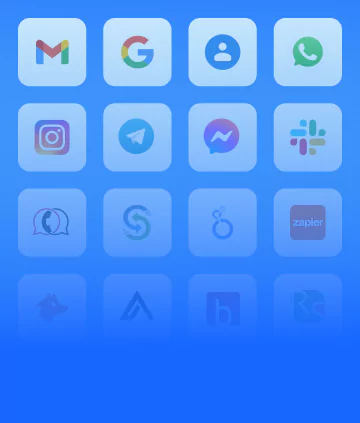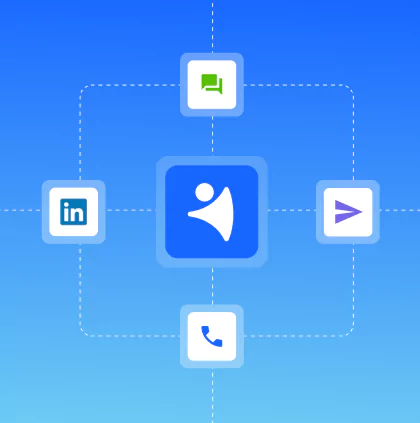If you doubt the importance of closing an email properly, just imagine the following situation. You’ve met a new business contact or client at an industry event. Once the conversation ends, you don’t simply walk away without saying another word to them. Instead, you wrap your meeting up with something like: “It was so nice to meet you! I hope to hear from you soon!”.
The same holds true for email correspondence. Every detail of your email matters, and your closing remarks can be the determining factor as to whether your email is answered or not. By using friendly, polite, and professional language with an effective call-to-action, you have a much better chance of receiving a positive response.
Firstly, by ending an email correctly, you leave a recipient with a good final impression about you. Secondly, it’s your opportunity to ensure they have your contact information. Thirdly, a professional sign-off motivates your recipient to take action.
When thinking about how to end your email, you are faced with a choice:
- use an automatic sign-off;
- write out different sign-offs for each email.
The first option saves time and lets the recipient focus more on the email’s content. However, this option can be construed as insincere and faceless and shouldn’t be applied to every audience.
If you decide to take the second option, you’ll need to be creative in customizing each email to each recipient. Sure, they’ll appreciate your personalization, but you’ll need to devote much more time to the process of composing your emails.
Whichever option you choose, remember that everyone likes being addressed directly. With this in mind, our advice is to always personalize your sign off. It takes a little more time, but it’s worth it in the long-run.
To help you reap the benefits of your emails, we’ve compiled 6 effective tips & tricks on how to end your email in the best way possible.
1 — Make your closing line appropriate to the situation
Choosing the correct closing line needs to be guided by the situation. Let’s think of some everyday professional contexts you might find yourself in. Here are some examples for how to end your email in the correct manner.
- You’re waiting for a meeting or further cooperation with someone. To stay in contact with them, it’s important to offer the possibility of future communication:
“Talk soon,”“Speak to you soon,”“I look forward to connecting soon,”“I look forward to meeting with you on [day],”“Stay tuned,” - The recipient has done something for you, so you need to express your gratitude to them:
“Thanks a lot for [what they did for you, written concisely],”“I genuinely appreciate your help,”“Thank you for your unwavering support,”“Thank you for taking the time to [do what they did for you],”“Many thanks,”“All my thanks,”“Thanks a million,” - You’re offering help to the recipient. For example, you might be sending them content or new information that is valuable to them. You should use the following sign-offs:
“Hope this helps,”“Hope you find this useful,”“If you need any further information, feel free to contact me.”“Should you need any further information, please do not hesitate to contact me.” - Your recipients might have feedback, questions, or concerns. Let them know that you’re all ears and are always willing to help them. Be accessible for your recipient; use this to your advantage:
“Happy to help if you want to know more,”“Let me know if you have any questions,”“Thanks in advance for your time,”“Drop me a line if I can do anything for you,”“Looking forward to your reply,” - You face rejection, but you still need to reply properly. You’re feeling disappointed, but it’s important to appreciate the recipient’s attention and time in the first place. Be gracious; this will leave a good impression about you as a professional.
“I appreciate your time and consideration,”“Thank you for your consideration,” - You want to send a congratulatory note. Everybody likes receiving compliments and greetings. It’s a win-win situation, because you might need a favor from the recipient in future. So, end your email with a final note that recognizes their accomplishment. This encourages further cooperation and conceives a positive attitude of you and your company.
“Great working with you,”“Keep up the great work,”“Stay awesome,”“Congrats,”“Have a splendid evening/ week/ day/ weekend!”“Wishing you happy holidays!”
2 — Include your email signature
Before saying goodbye to your interlocutor you should share your contact info. This principle remains the same in email conversation. By not including your contact information, your email looks unfinished.
Imagine it as a 21st century business card; your email signature makes it easy for prospects to learn more about you via any links you include. In our recent blogpost “How To Create A Professional Email Signature”, you’ll find tips that help you write an eye-catching email signature.
To make the very final part of your email simpler and more concise, follow these tips:
- Firstly, be sure to include your full name. Do not use a nickname or just your first name, unless you are emailing a close friend. This avoids any awkward confusion.
- Secondly, add your current job title and company, especially if you are corresponding with an external party.
- Thirdly, it is useful to include contact information at the end of your email. You can include your phone number, social media icons such as LinkedIn or Facebook, and your email address. Whether your recipient knows you well or not, you should incorporate all of the points above to make your email closing professional.
3 — Add a call-to-action
This is an essential part of your email content, located above your signature. A call-to-action tells the reader how they can respond to your email and the recipient should know exactly what the next step is. Besides, a CTA encourages your addressee to interact. The action you want them to take could be about anything, but depends on your goals. For instance, you can share some content followed by one of these sentences:
“PS: You may find this interesting: [link]”“Enjoy!”“Don’t forget to [action]!”
4 — Avoid unprofessional closings
When closing your email, you should take your audience into consideration. For example, you wouldn’t want to close your business email to a client or business partner with “Love” or “Hugs”. Use the following sign-offs in personal emails and avoid them at the end of your business emails:
“Warmest,”“Warm regards,”“Take care,”“Be well,”“Ciao,”“XOXO”Truly Yours,”“See ya,”
5 — Check spelling and grammar
An email closing that is full of typos and grammatical errors leaves readers under the impression that the sender is sloppy and unprofessional. It only takes a few minutes to read over your email and use the spell-check tool. Don’t overlook this tip.
Sent from my iPhone. This is one of the most common sign-offs. It explains brevity and typos – who’s at their best when typing on a phone? But don’t overuse it.
Some people get creative with this closing line. The examples below are appropriate to use in your business emails, though such sign-offs can’t be applied to every type of recipient.
“Sent from my smartphone, so please forgive any dumb mistakes.”“I am responsible for the concept of this message. Unfortunately, autocorrect is responsible for the content.”“iPhone. iTypos. iApologize.”“Sent from my mobile. Fingers big. Keyboard small.”
6 — Use emojis ?
Do you receive emails containing emoticons? If so, you probably found that it brightened up your day.
Emoticons have been a usual practice in informal communication for quite some time. Emojis in business and marketing are becoming more and more popular. They already dominate social media platforms, allowing brands to communicate with their customers in a friendly manner.
Emoticons help guide the tone of a message. You can make a message look more personalized and friendly, so use them if that’s the tone you’re going for. Studies have shown that seeing an upright smiley face activates the same part of the brain as seeing a real face. Still, don’t use them unless your company says it’s okay, and remember to understand your audience.
Even though your email endings are the last part of your email, they are far from the least important. Writing proper, professional emails helps shine a positive light on yourself for your colleagues, employers, and customers. If you follow all of these tips and tricks, you’ll see your professional emails become much more effective in getting the results you want.
Stay awesome,
NetHunt ?












![How to end a professional email [+44 examples]](/blog/content/images/size/w2000/2020/05/How-to-end-your-emails-right-2.png)








 product experts — let's find the best setup for your team
product experts — let's find the best setup for your team